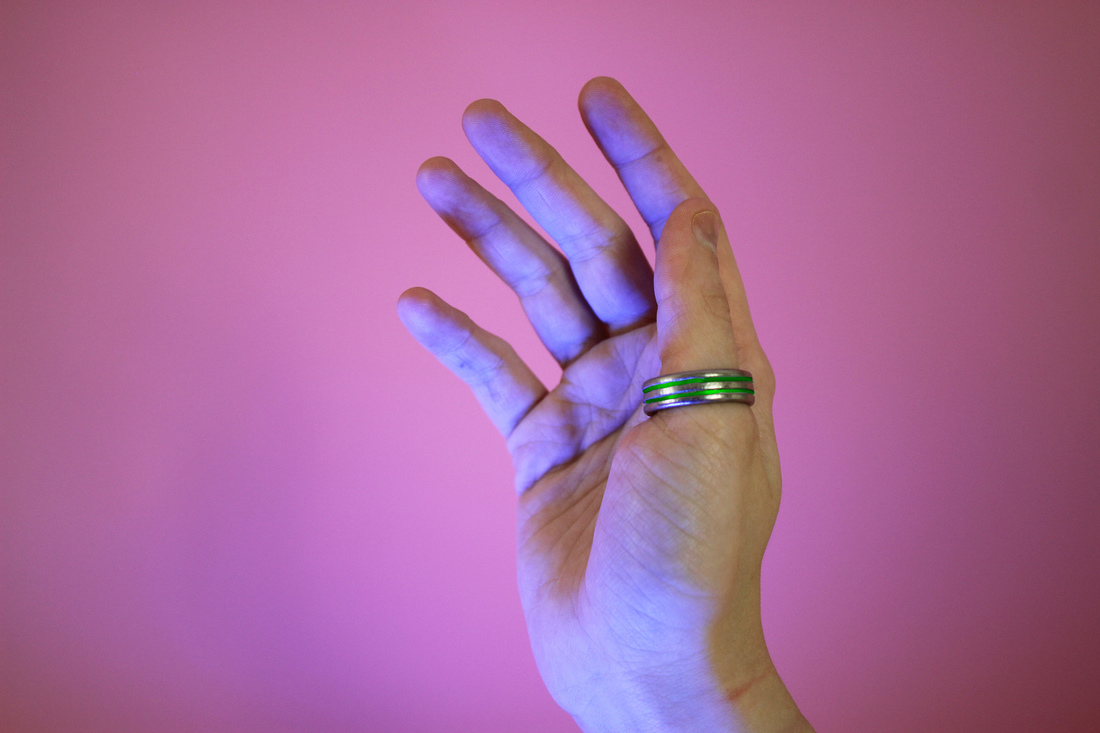/TEACHING
Some notes on my 2017 Selected Topics in Graphic Design
(offered spring semester 2017 for Graphic Design BFA students)
In spring 2017, I had the opportunity to teach my first selected topics course. In this class, we addressed the relationship between design and emerging technologies. We talked about the dynamic forces at play when a new technology is developed, and how social and material relations (vis-a-vis political economy) are embedded within or reified by our technologies. Students engaged in three projects: in the first, students unpacked the relations within a given technology; in the second, students sought to identify certain tendencies within a particular technology and design consumer products that would subvert those tendencies; and in the third, students engaged in a short exploration of machine vision technologies.
The first project took its cues from the Implosion Project given by Donna Haraway to one of her writing classes. This project asked students to trace the nature of a technological object, looking at the object as a networked assemblage of materials, patents, corporations, individuals, ideologies, etc. The students were then asked to, given what they learned about the technological artifact they had chosen, express their new knowledge about it as an assemblage through a website/web-based interactive work.
(offered spring semester 2017 for Graphic Design BFA students)
In spring 2017, I had the opportunity to teach my first selected topics course. In this class, we addressed the relationship between design and emerging technologies. We talked about the dynamic forces at play when a new technology is developed, and how social and material relations (vis-a-vis political economy) are embedded within or reified by our technologies. Students engaged in three projects: in the first, students unpacked the relations within a given technology; in the second, students sought to identify certain tendencies within a particular technology and design consumer products that would subvert those tendencies; and in the third, students engaged in a short exploration of machine vision technologies.
The first project took its cues from the Implosion Project given by Donna Haraway to one of her writing classes. This project asked students to trace the nature of a technological object, looking at the object as a networked assemblage of materials, patents, corporations, individuals, ideologies, etc. The students were then asked to, given what they learned about the technological artifact they had chosen, express their new knowledge about it as an assemblage through a website/web-based interactive work.


Above: screenshots of Jenna Culliton’s “implosion” project.
The second project asked students to produce consumer products from the near future that, in some way, subverted a particular sociotechnical tendency (and the way that this tendency might be exacerbated in the future).
Lorenza Centi’s project, Elixir, proposed the existence of an internet-connected mood-ring and corresponding app that gave users access to the most sophisticated “data-driven astrology.”
From her site:
Elixir, as a fiction, is a whimsical yet biting critique on our obsession with “data-driven” anything, and purports to be more “accurate” than other astrological charts because of its
reliance on big data.
The second project asked students to produce consumer products from the near future that, in some way, subverted a particular sociotechnical tendency (and the way that this tendency might be exacerbated in the future).
Lorenza Centi’s project, Elixir, proposed the existence of an internet-connected mood-ring and corresponding app that gave users access to the most sophisticated “data-driven astrology.”
From her site:
Elixir is a precision tracking system that allows you to follow your astrological chart in real time and space for a more accurate reading. With updates on positions of the sun, moon and planets astrological aspects, and consideration of sensitive angles to allow for more accurate representation of events within your life. Using smart fiber woven textile color changing technology, the elixir ring subtly alerts you or a change in astrological location affecting your sign. Paired with app integration, a custom profile is built on your natal chart and personality traits. Changes in lifestyle categories, including career, life, love and health are then indicated by change in color.
Elixir, as a fiction, is a whimsical yet biting critique on our obsession with “data-driven” anything, and purports to be more “accurate” than other astrological charts because of its
reliance on big data.



Above: images from Lorenza’s Elixir project.
Finally, during the last week of the course, we experimented with the face- and object-tracking features of Google’s Cloud Vision platform. We learned some things about the inherent biases in this platform and the way the data on which it was trained influences how it “sees.”
Finally, during the last week of the course, we experimented with the face- and object-tracking features of Google’s Cloud Vision platform. We learned some things about the inherent biases in this platform and the way the data on which it was trained influences how it “sees.”

Above: A page from Rachel Davis’ 68-page book of Google Cloud Vision JSON output.